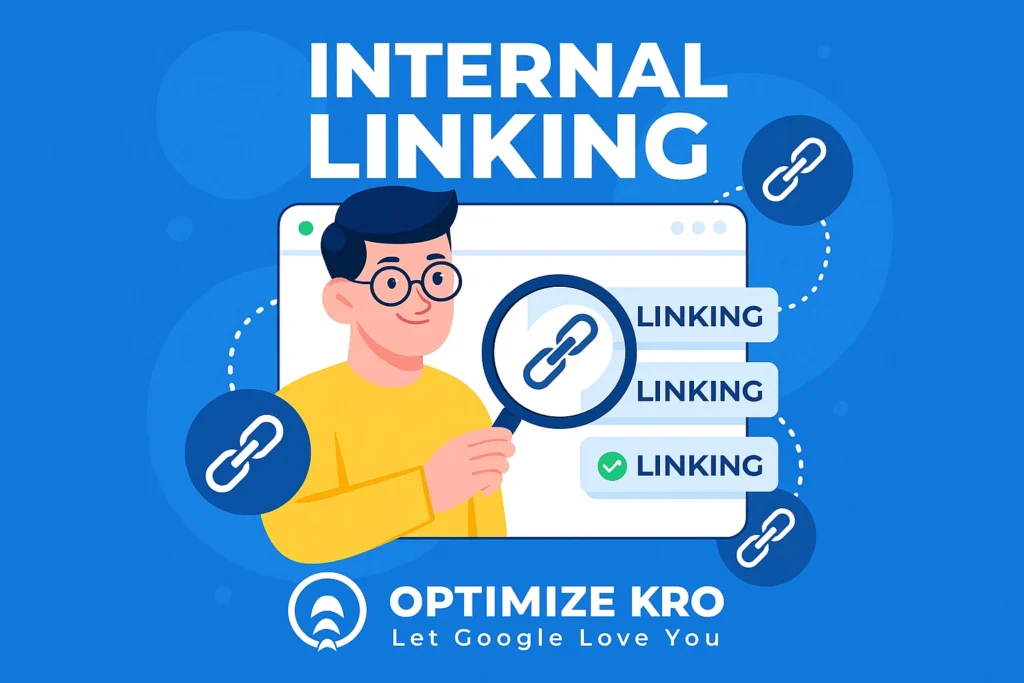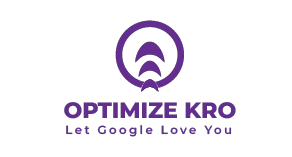Internal linking is one of the most crucial aspects of on-page SEO (Search Engine Optimization). This method of linking one page of your website to another improves navigation, enhances user experience, and, perhaps most importantly, helps search engines understand the structure and hierarchy of your site.
In this article, we’ll take an in-depth look at internal linking—what it is, why it’s essential for SEO, how to effectively implement internal links, best practices, and answer some frequently asked questions (FAQs) on the subject. We’ll also include a table, list, and helpful insights based on NLP (Natural Language Processing) optimization techniques.

What is Internal Linking?
Internal linking refers to the practice of linking one page of your website to another. These links connect different pages and create pathways for both search engines and users to navigate your website. Internal links can be found in many forms, such as:
- Text Links: These are the most common and typically appear as clickable text that directs visitors to other pages on your site.
- Navigation Menus: These links appear in your website’s header, footer, or sidebar and help visitors access important pages across your site.
- Breadcrumb Links: These are hierarchical links that show users the path they’ve taken to reach a particular page on your website (usually seen in a breadcrumb navigation format).
Internal linking helps establish a website’s architecture, making it more accessible for both users and search engines.
Why Internal Linking is Important for SEO?
Search engines like Google use bots (also called crawlers) to scan the content of a website. These bots rely heavily on internal links to crawl the entire site and understand its structure. Effective internal linking can positively impact SEO in several ways:
1. Improved Crawlability and Indexing
Internal links allow search engine crawlers to easily discover and index new content. When you link to a page, crawlers follow that link to find additional pages on your website, ensuring that your entire site gets indexed.
2. Enhanced User Experience (UX)
Internal links improve the user experience by making it easier for visitors to navigate your website and find relevant information. A well-structured internal linking system helps visitors move from one page to another, keeping them engaged for longer periods.
3. Link Equity Distribution
Internal links help distribute link equity (also known as “link juice”) across your website. When you link to a page with high-quality content, that page can pass on some of its authority to the linked pages, boosting their SEO performance.
4. Increased Page Views
By strategically linking to relevant content, you encourage visitors to explore more pages on your site. This increases page views, decreases bounce rates, and signals to search engines that your site provides valuable content.
5. Establishes Content Hierarchy
Internal links help define the hierarchy of your website’s content. By linking to your most important pages (like pillar content), you send signals to search engines about which pages are most valuable. This helps establish the overall structure of your site.
How to Do Internal Linking Effectively?
Now that we understand the importance of internal linking for SEO, let’s dive into how you can do it effectively. Here’s a step-by-step guide:
1. Link to Relevant Content
Only link to pages that are contextually relevant to the content you’re writing about. For example, if you’re writing a blog post about “SEO Tips,” link to other relevant blog posts, such as “Keyword Research Tips” or “On-Page SEO Checklist.” This relevance improves both user experience and SEO.
2. Use Descriptive Anchor Text
Anchor text is the clickable text that forms the link. Using descriptive, keyword-rich anchor text helps search engines understand the context of the linked page. For example, instead of using a generic anchor like “click here,” use more specific text like “learn more about internal linking.”
3. Ensure a Logical Link Structure
Organize your internal links in a way that mirrors the structure of your website. Ensure that your most important pages (e.g., cornerstone content, homepage, or service pages) are easily accessible through internal links. Prioritize linking to these key pages from other content.
4. Link Deep Within Your Site
While it’s essential to link to high-level pages, don’t forget to link to deeper pages (pages buried deep within your website). Internal linking helps bring attention to those pages and boosts their visibility in search engines.
5. Limit the Number of Internal Links
While it’s tempting to link to every related page, it’s important not to overdo it. Too many internal links on a page can be overwhelming and diminish the value of each individual link. Aim for a reasonable number of internal links per page, focusing on quality over quantity.
6. Use Breadcrumbs
Breadcrumb navigation is a great way to improve internal linking and user experience. Breadcrumbs show users their current location within the site structure and allow them to quickly navigate to previous pages.
7. Update Internal Links Regularly
As your website grows and new pages are added, make sure to update internal links to include these new pieces of content. It’s also essential to fix any broken links on your website, as they can negatively impact both user experience and SEO.
Best Practices for Internal Linking
1. Prioritize High-Value Pages
Ensure that the most important pages of your website are getting the most internal links. These can be your cornerstone or pillar content, which is usually the content that defines your site’s primary topics.
2. Use a Natural Linking Approach
Avoid forcing links into content. Internal linking should feel natural and be done in a way that adds value to the user. If a link doesn’t make sense in the context, it’s better not to include it.
3. Diversify Anchor Text
While using keyword-rich anchor text is important for SEO, it’s also crucial to diversify the anchor text to avoid keyword stuffing. Use variations and related terms to create a more natural link structure.
4. Link to New Content
Whenever you add new content to your site, make sure to link to it from relevant existing pages. This helps ensure that your new content gets crawled and indexed quickly by search engines.
5. Use NoFollow Links Where Appropriate
If you want to link to a page but don’t want to pass SEO value to it (such as a privacy policy or login page), you can use a “nofollow” attribute on the link.
Table: Internal Linking Strategy Overview
| Strategy | Description | Benefit |
|---|---|---|
| Relevance | Only link to pages that are contextually relevant | Improves user experience & SEO |
| Anchor Text | Use descriptive, keyword-rich anchor text | Helps search engines understand the context |
| Logical Structure | Ensure important pages are easily accessible | Boosts visibility of key pages |
| Deep Linking | Link to pages deeper in your site’s structure | Increases visibility of all pages |
| Regular Updates | Ensure links are up-to-date and working | Prevents broken links and SEO issues |
| Use of Breadcrumbs | Add breadcrumb navigation to improve site hierarchy | Enhances user experience & navigation |
What Our Clients Say
Trusted by contractors and local businesses for proven Local SEO Services.
John M. – General Contractor
“These guys transformed my Google Maps ranking. More calls, more local leads, and better visibility!”
Sarah L. – Roofing Business
“Within 3 months, my business went from page 3 to the top 3 listings. Highly recommend their Local SEO service!”
David K. – Plumbing Services
“Affordable and effective SEO. My local service calls doubled in less than 90 days.”
Internal links connect pages within your own website, while external links point to pages on other websites. Both types of links are important for SEO, but internal links help search engines understand your site structure and distribute page authority internally.
There’s no specific number of internal links you should aim for. However, aim for a reasonable number based on the content length. Too few links might not provide enough context, while too many can overwhelm the reader and reduce link effectiveness.
Yes! Internal links can pass link equity to other pages on your website, which helps improve their SEO performance. Linking to relevant, authoritative pages improves your chances of ranking higher in search engine results.
Internal linking becomes even more important for large websites. Without a clear internal linking structure, large websites can confuse both users and search engine crawlers. Effective internal linking helps users navigate and ensures that crawlers index all the content on your site.
While it’s a good idea to use internal links in most content, don’t force them. Only link to other pages when it’s relevant and enhances the user experience.
Conclusion
Internal linking is a powerful SEO strategy that enhances both user experience and search engine optimization. By connecting relevant pages, creating a logical site structure, and following best practices, you can improve your website’s SEO performance and help search engines better understand your content.
Start implementing effective internal linking today, and you’ll likely see improved crawlability, increased page views, and better SEO rankings in the long run.

Gulfam Qamar is a seasoned Local SEO expert with a proven track record of helping businesses boost their online visibility and dominate local search results. With deep expertise in Google Business Profiles, on-page optimization, and local citation strategies, Gulfam helps brands connect with nearby customers and grow sustainably. When he’s not optimizing websites, he’s sharing actionable SEO tips and insights to empower small businesses in the digital space.

